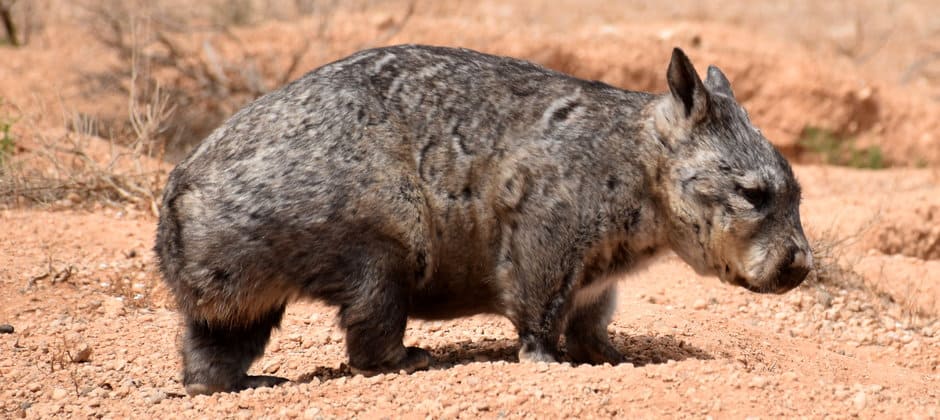Share this article
Wild Cam: Wombats face grim outlook in hotter, drier climate
It’s a tale of two wombats.
Down to fewer than 200 individuals, the northern hairy-nosed wombat (Lasiorhinus krefftii) is listed as critically endangered by the International Union for Conservation of Nature. The southern hairy-nosed wombat (Lasiorhinus latifrons), on the other hand, a close cousin of the northern, isn’t in immediate conservation danger, but its numbers in the Murraylands of South Australia have declined significantly across the last two decades.
Are there lessons that researchers can learn from the southern species to apply to the northern one as well?
For a study in the Journal of Wildlife Management, David Taggart, associate professor in wildlife biology and conservation research at the University of Adelaide in Australia, set out in his pickup truck with a spotlight, a rifle and some nets to find out what’s going on with the southern species.
Enlarge
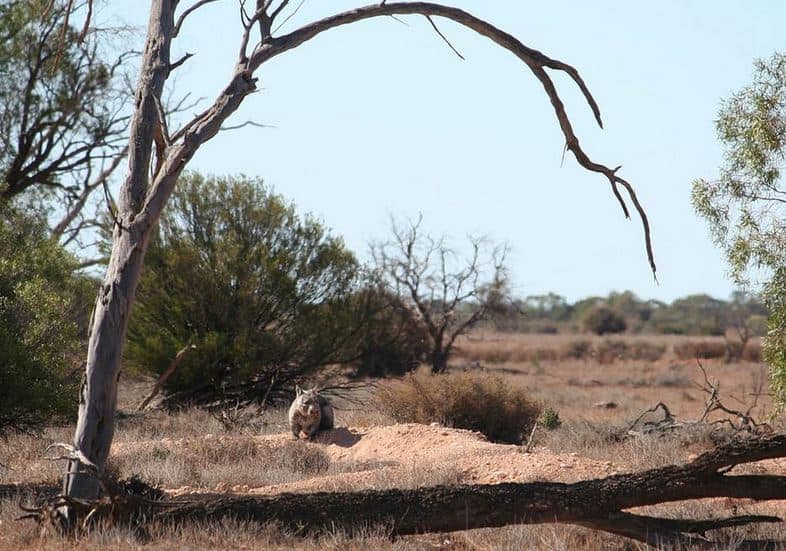
Courtesy of David Taggart
The technique for capturing a wombat is straightforward, but unusual. Blast it with a spotlight from the back of the pickup, and fire a bullet about 10 inches over its head. The animal will often stand so still, Taggart said, researchers can run up beside it — even pose for a selfie — and then net it.
But since the northern hairy-nosed wombats are so rare and endangered, Taggart and his colleagues turned their attention to the southern species to fill knowledge gaps in the population biology and life history of both species. Current knowledge suggests that the ecological habits and preferences of both species are nearly identical, allowing researchers to learn about the impacts of rainfall and drought on abundance factors in the southern species that might also apply to the northern.
The information could help direct conservation action under climate change, Taggart said, which is projected to create hotter and drier conditions throughout both of their ranges.
Enlarge
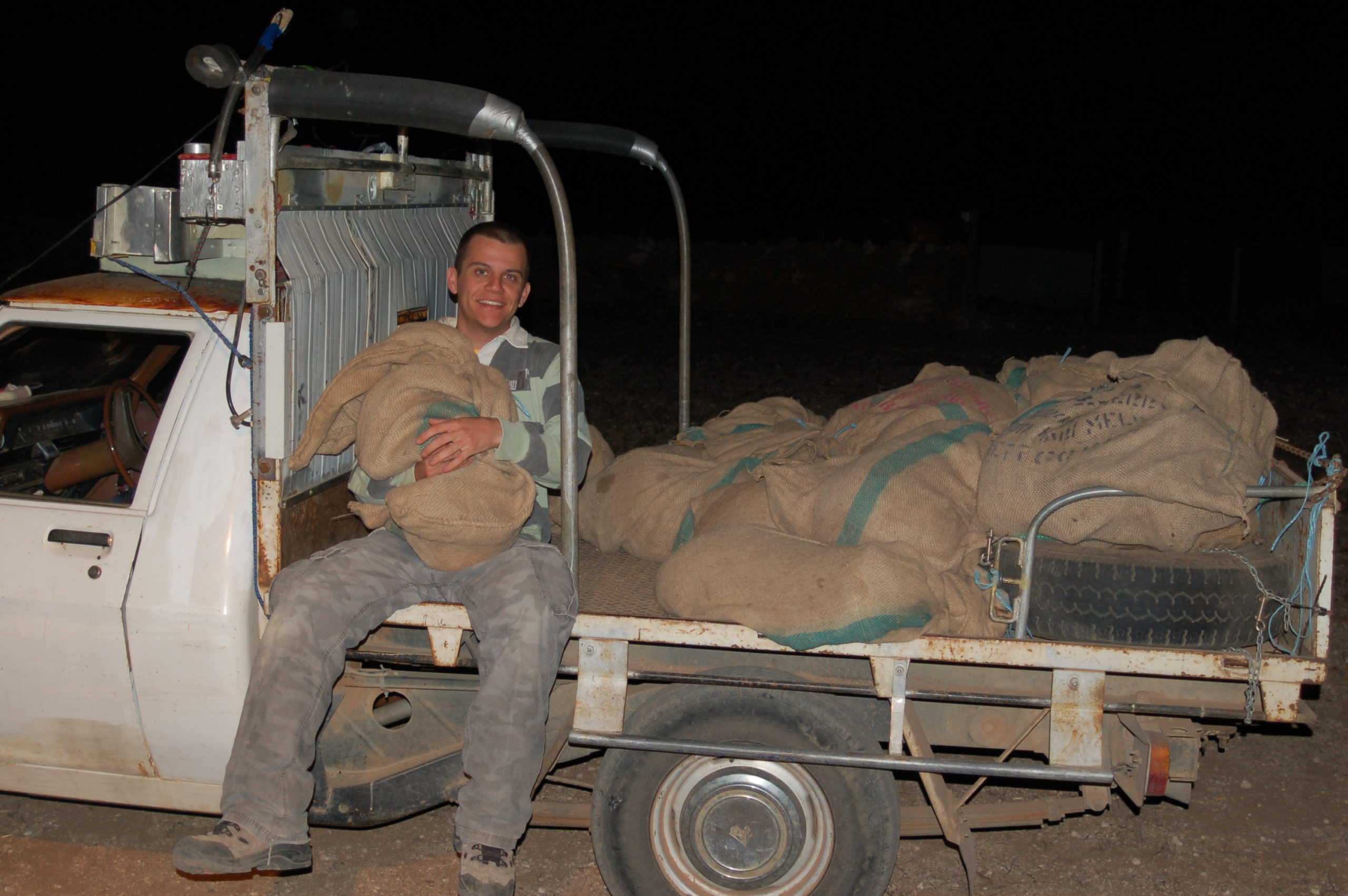
Courtesy of David Taggart
Taggart and his colleagues have been working with wombats for more than two decades at Kooloola Station in South Australia’s Murraylands. Part of that research — conducted from 1993 to 2014 — included collecting body condition data from wombats that they captured and released.
Enlarge
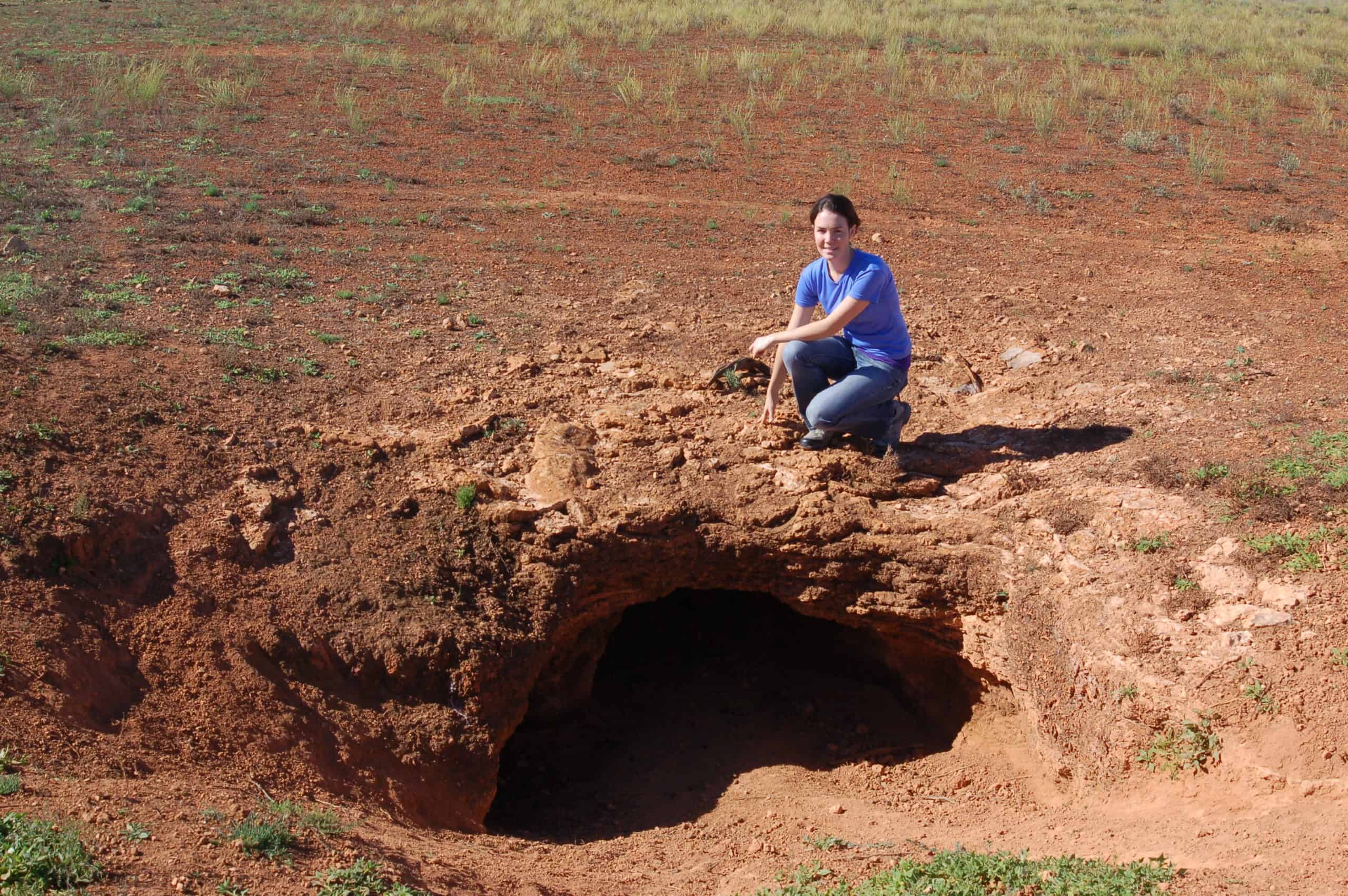
Courtesy of David Taggart
Stunning the animals is critical, because wombats don’t usually stray too far from their burrows. If the researchers spook them, the burly, 80-pound marsupials quickly escape to the shelter of their burrows and are almost impossible to extract.
They are big enough — and strong enough — that researchers need to pay heed. Once, Taggart said, a wombat he described as “solid muscle” dragged a graduate student into its burrow as she held onto the handle of the net. The rest of the team arrived to find her legs sticking out of the burrow entrance as she screamed “I’ve got it, I’ve got it! Pull me out, pull me out!”
Enlarge
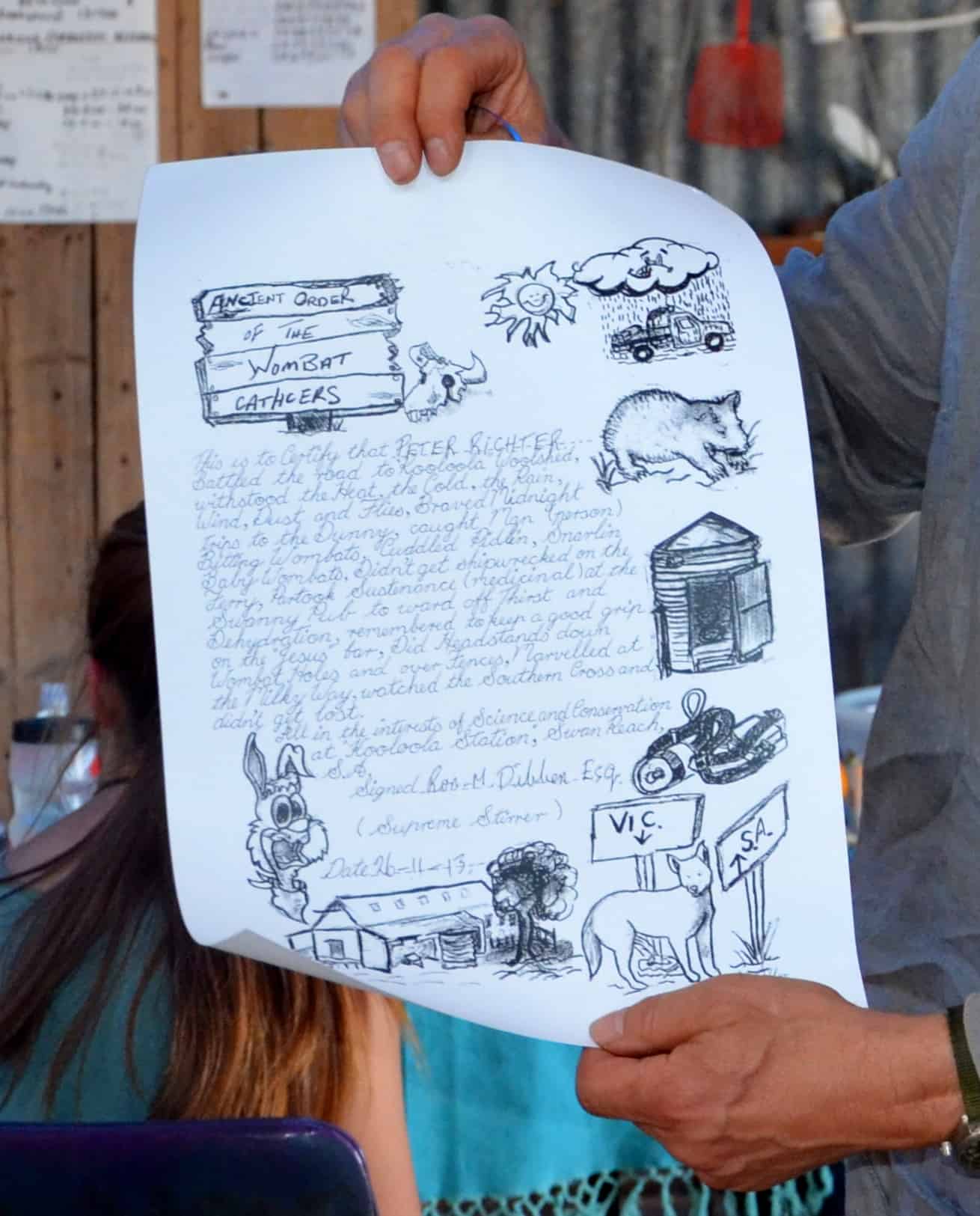
Courtesy of David Taggart
Courtesy of Taggart, researchers who catch a wombat receive a handmade certificate inducting them into the tongue-in-cheek ‘Ancient Order of the Wombat Catchers.’ “Any great wombat catches are recorded,” Taggart said.
As part of the research, Taggart used radio-tracking devices on the southern hairy-nosed wombats for a year. “Basically, we found that they did very little,” he said. “Apart from the breeding season, their whole life seems to revolve around conserving water and energy.”
Wombats can hide for long periods in their burrows when weather conditions are particularly hot and dry, using the depth of the hole to protect themselves from dehydration and extreme heat. “They just hunker down and ride out the drought,” Taggart said. They can even seal the burrows to increase humidity and retain moisture that they might otherwise lose through breathing. They also have a long gut retention time for food, helping them to maximize the benefits of available food and moisture and conserve energy for long periods.
Enlarge
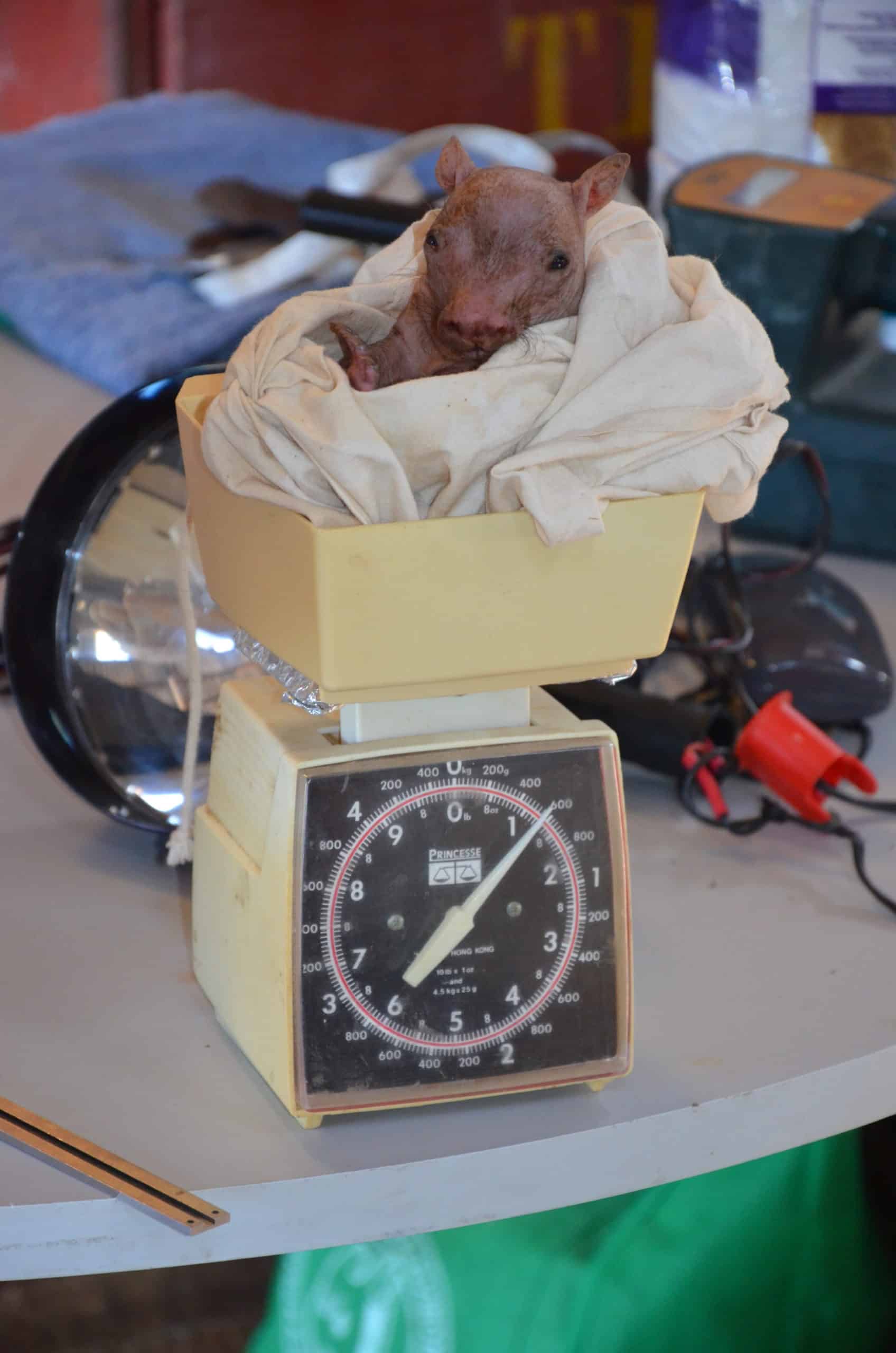
Courtesy of David Taggart
Under climate change, Taggart said, drought conditions are worsening, with data indicating significant effects on southern hairy-nosed wombats. Severe conditions are resulting in death and reproductive failure. Over the course of the study, Taggart saw an 80% drop in the population from 1993 to 2003, a reduction he attributed to an extended drought in the region known as the Millennium Drought, which lasted from 1996 to 2010.
Enlarge
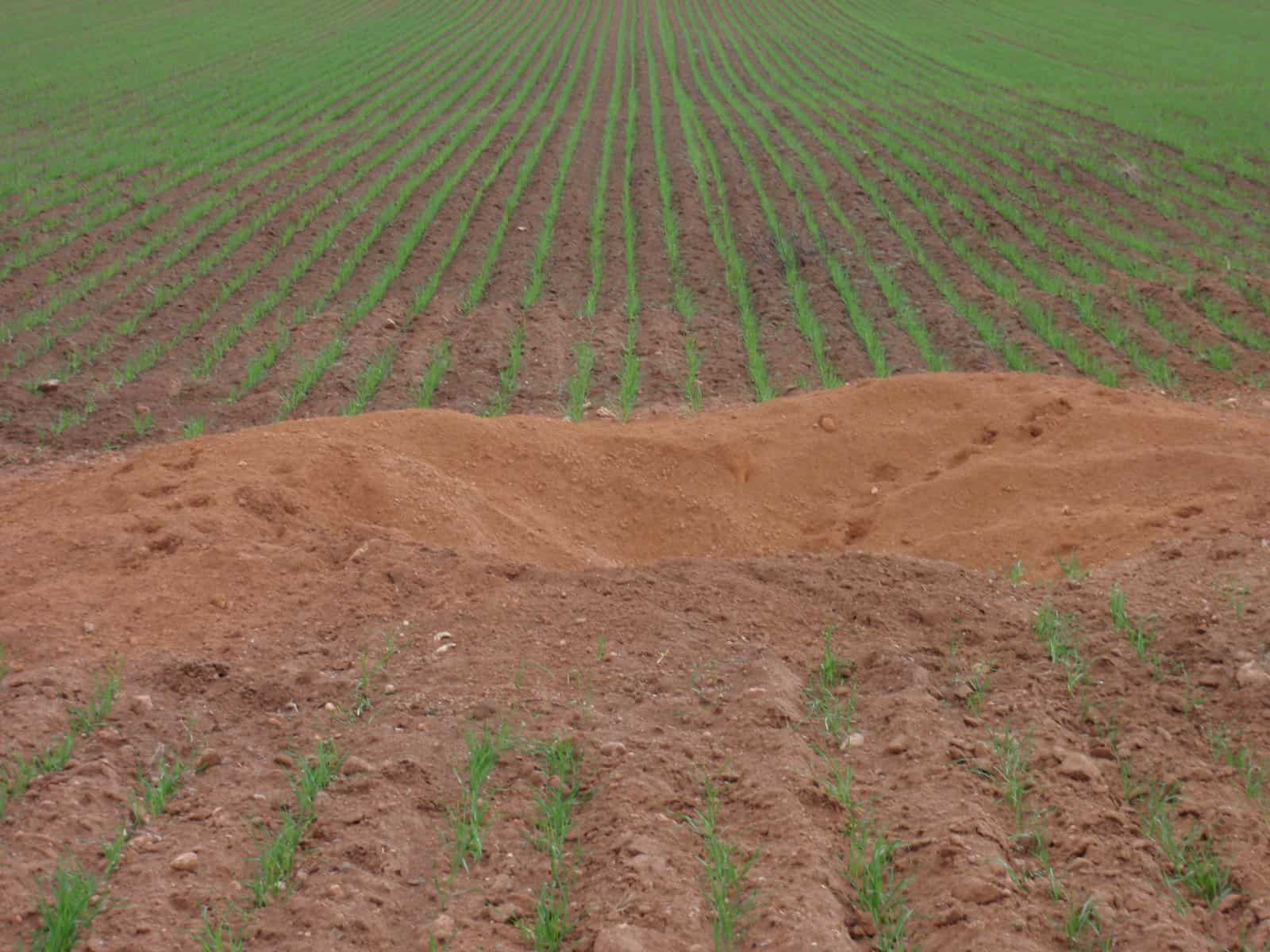
Courtesy of David Taggart
Introduced species may also play a role in declining wombat numbers. Historical information indicated that Kooloola Station where the study occurred, used to be dominated by summer-germinating native grasses and forb species, but the area is now full of introduced weeds that germinate in the winter, potentially affecting the availability of food for the wombats during the critical summer/autumn period of the year. Introduced rabbits and competition from livestock also reduce the availability of the native plant that the wombats rely on for food.
“When the wombats lose their native pasture, they lose year-round opportunities to feed, which can affect body condition, breeding and even survival,” Taggart said.
All of these factors affecting the southern wombats also applied to northern hairy-nosed wombats, Taggart said. Northern wombats are also experiencing increasingly severe droughts, while invasive grasses are also outcompeting native grasses in the area.
If drought frequency or duration continue to increase under climate change as predicted, Taggart said, northern hairy-nosed wombats will likely disappear. Even the more numerous southern hairy-nosed wombats are unlikely to survive these impacts if they occur across coming decades, he said, potentially resulting in “the extinction of an iconic and abundant Australian marsupial.”
Enlarge
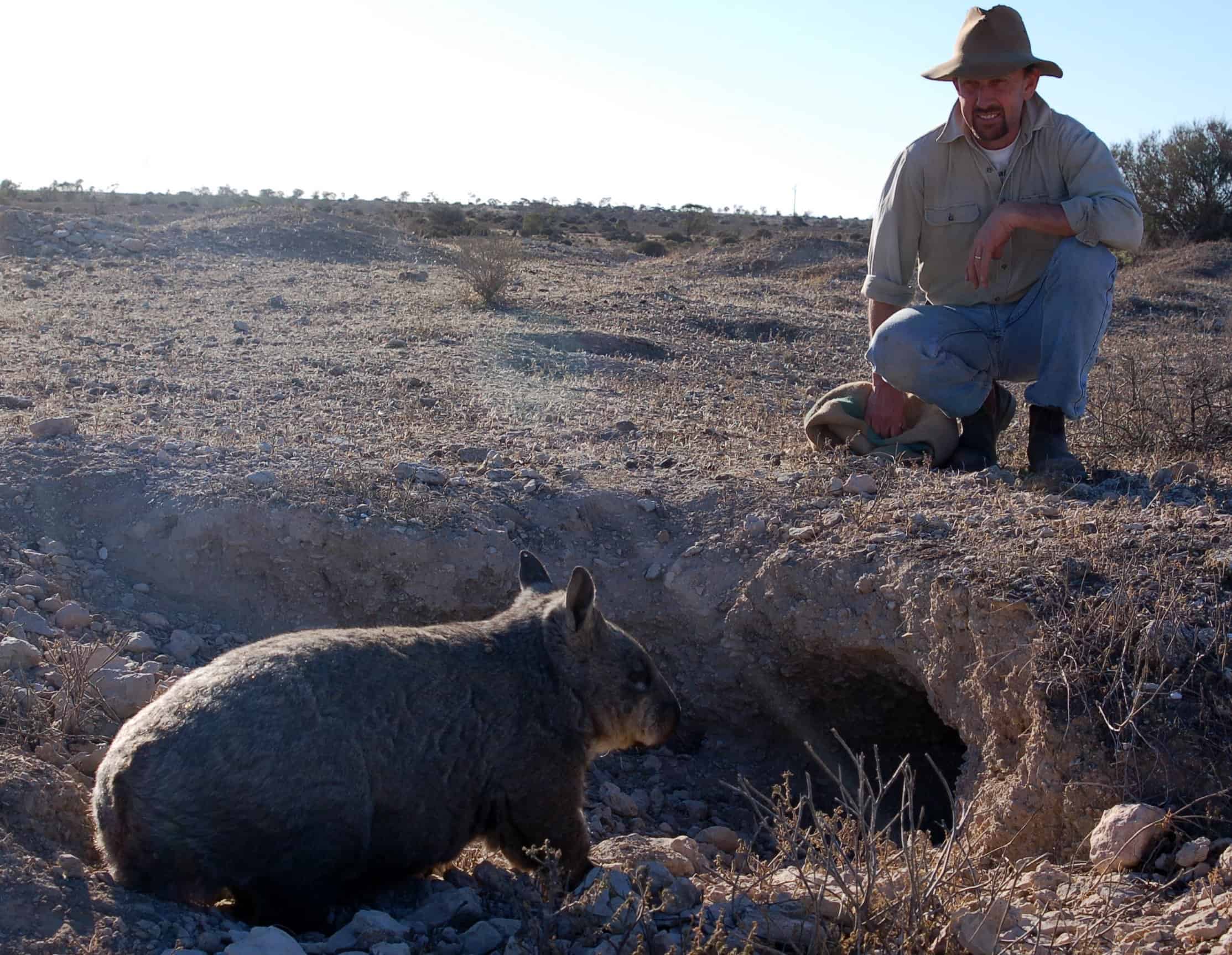
Courtesy of David Taggart
This photo essay is part of an occasional series from The Wildlife Society featuring photos and video images of wildlife taken with camera traps and other equipment. Check out other entries in the series here. If you’re working on an interesting camera trap research project or one that has a series of good photos you’d like to share, email Joshua at jlearn@wildlife.org.
This article features research that was published in a TWS peer-reviewed journal. Individual online access to all TWS journal articles is a benefit of membership. Join TWS now to read the latest in wildlife research.
Header Image:
A southern hairy-nosed wombat in Kooloola Station in South Australia’s Murraylands.
Courtesy of David Taggart



